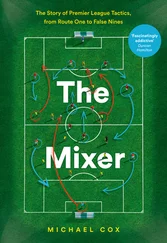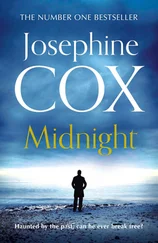The most fascinating individual was Laudrup, effectively the Cruyff figure in Cruyff’s Dream Team. Cruyff had been his childhood hero, and at World Cup 1986, a tournament for which Holland failed to qualify, Laudrup was the outstanding player in the fabulous ‘Danish Dynamite’ side that drew comparisons to the Dutch Total Footballers of the 1970s. Laudrup signed for Barca in 1989 and immediately became the side’s technical leader, dropping deep from a centre-forward role to encourage midfield runners into attack. He could play killer through-balls with either foot, and possessed an uncanny ability to poke no-look passes with the outside of his right foot while moving to his left, leaving defenders bamboozled. He would finish his career, incidentally, with a one-year stint at Ajax in 1997/98.
On one hand, Cruyff adored Laudrup’s natural talent. When Laudrup scored a stupendous last-minute equaliser at Real Burgos in 1991/92, flicking the ball up with his left foot and smashing it into the top-right corner with his right, Laudrup rushed over to celebrate with a delighted Cruyff, among the warmest embraces between player and manager you’ll witness. But Cruyff also labelled him ‘one of the most difficult players I’ve worked with’, believing that Laudrup didn’t push his talents hard enough, and he constantly complained about his lack of leadership skills. Cruyff used Michels’s ‘conflict’ approach, but it only served to annoy the Dane, who was a nervous, reserved footballer requiring more delicate treatment.
The beneficiary of Laudrup’s measured through-balls was another supremely talented superstar, Bulgarian legend Stoichkov. ‘From more than 100 goals I scored, I’m sure that over 50 were assisted by Michael,’ Stoichkov said of his period at Barca. ‘To play with him was extremely easy – we found each other by intuition.’ That was a telling description; in a Van Gaal side attacking was about pre-determined moves, in a Cruyff side it was about organic relationships.
Like Laudrup, Stoichkov idolised Cruyff and still owned videos of the Dutchman when he agreed to join him at Barcelona, but he was completely different from Laudrup in terms of personality: aggressive, fiery and unpredictable. He’d been handed a lifelong ban from football in his homeland, later reduced to a year, for fighting at the 1985 Bulgarian Cup Final. After impressing Cruyff by scoring a wonderful chip over the head of Barcelona goalkeeper Andoni Zubizarreta for CSKA Sofia in the Cup Winners’ Cup, he arrived at the Camp Nou in 1989. ‘He had speed, finishing and character,’ Cruyff remembered. ‘We had too many nice guys, we needed someone like him.’ But in Stoichkov’s first Clásico he was shown a red card, stamped on the referee’s foot on his way off and was handed a ten-week ban. At another club Stoichkov might have been sacked, but Cruyff kept faith and he scored the winner on his return, then the following week scored four in a 6–0 victory at Athletic Bilbao. Stoichkov was worth indulging, even if he received ten red cards while at Barca, an incredible tally for a forward.
Unlike Laudrup, Stoichkov was well suited to Cruyff’s ‘conflict model’, perfectly understanding the purpose of his manager’s attacks. ‘In front of the group he told me that I was a disaster, that I wasn’t going to play the next game and that he was going to sell me,’ Stoichkov explained. ‘But at the end of training we would go and eat together.’ He repeatedly professed his hatred for Real Madrid, and supporters loved his attitude – Stoichkov would refuse to sign autographs, yet fans would just laugh at his anarchic nature. ‘He shook things up,’ said Zubizarreta. ‘Although he sometimes went too far, I am grateful for people like him who are capable of breaking the monotony of everyday life.’
Yet by 1993/94, when Cruyff won his final league title, Stoichkov wasn’t even the most arrogant forward at Barcelona, because Cruyff had raided Ajax’s rivals PSV to sign Brazilian striker Romario, an extraordinary talent who also had a reputation for skipping training sessions. ‘People say he’s a very difficult individual,’ suggested a journalist upon Romario’s arrival. ‘You could say the same thing about me,’ Cruyff fired back, delighted to sign a footballer who possessed his individualistic nature. Romario declared himself the world’s best-ever striker, announced he would score 30 league goals (he did, winning the Pichichi Trophy as La Liga’s top goalscorer), then spent the season promising that the 1994 World Cup would be ‘Romario’s tournament’ (it was, and he was then voted World Player of the Year). Whereas at PSV Romario was regularly involved in build-up play, at Barcelona he would vanish for long periods before providing a ruthless, decisive finish. His acceleration was incredible, he had a knack of surprising goalkeepers with toe-poked finishes and he unashamedly celebrated goals solo, even when he’d simply converted into a gaping net after a teammate had done the hard work.
Stoichkov and Romario had a love–hate relationship throughout their 18 months together. Cruyff said they had ‘the same problem’, thinking the side was built around them, and they sometimes appeared to be competing to score the most goals rather than combining as a traditional strike partnership. Yet it spurred both on to new heights, and they struck up a surprising friendship. ‘It seems bizarre and even now I ask myself how it was possible,’ Stoichkov said later. ‘But we became good friends right from the start; we were inseparable.’ Their wives became best friends, their children went to school together, Stoichkov became godfather to one of Romario’s sons and acted as a minder when Romario visited the hospital to visit his newborn, getting a photographer out of the way by punching him.
On the European stage their most memorable display was a 4–0 thrashing of Manchester United at Camp Nou in November 1994. Stoichkov scored the first, Romario grabbed the second, then Stoichkov dribbled forward, slipped in Romario, who backheeled a return pass for Stoichkov to smash in the third. Full-back Albert Ferrer rounded off the scoring. ‘We just couldn’t handle the speed of Stoichkov and Romario,’ admitted United manager Alex Ferguson. ‘The suddenness with which they attacked was a new experience.’ But for Barcelona fans the 5–0 thrashing of Real Madrid earlier that year meant more. Romario hit a hat-trick, including an opener featuring him outwitting Real centre-back Rafael Alkorta with an incredible move that became known as ‘the cow’s tail’: receiving the ball with his back to goal, then turning on the spot by touching the ball twice in one movement, dragging it around into his path and finishing. ‘It will go down in history,’ said Stoichkov, referring to Romario’s move when he could have been speaking about the scoreline. But Barca were hugely inconsistent at this point, and only an excellent late run meant they pinched the title from Deportivo on goal difference, the second straight season they’d triumphed courtesy of a rival slipping up on the final day. That wasn’t, in itself, disastrous – but a 4–0 loss to Milan in the 1994 European Cup Final was.
Things started to fall apart. Cruyff and Laudrup’s relationship had broken down, the Dane was omitted from the squad for that Milan final and his contract wasn’t renewed. He promptly imitated Cruyff’s controversial switch to Feyenoord in 1983, joining Real Madrid and inspiring them to the league title while Cruyff, intriguingly, claimed Laudrup had become too individualistic. ‘He lacked discipline,’ Cruyff protested. ‘If you have a lot of stars in a team, there has to be a limit as to what each does as an individual.’ This was something of a curious explanation, though, considering that Laudrup was evidently a selfless player who loved assisting others. The reality was that Barcelona simply now had brighter stars, and with the three-foreigner rule still in place, Laudrup had become fourth in the pecking order behind Romario, Stoichkov and centre-back Ronald Koeman.
Читать дальше












